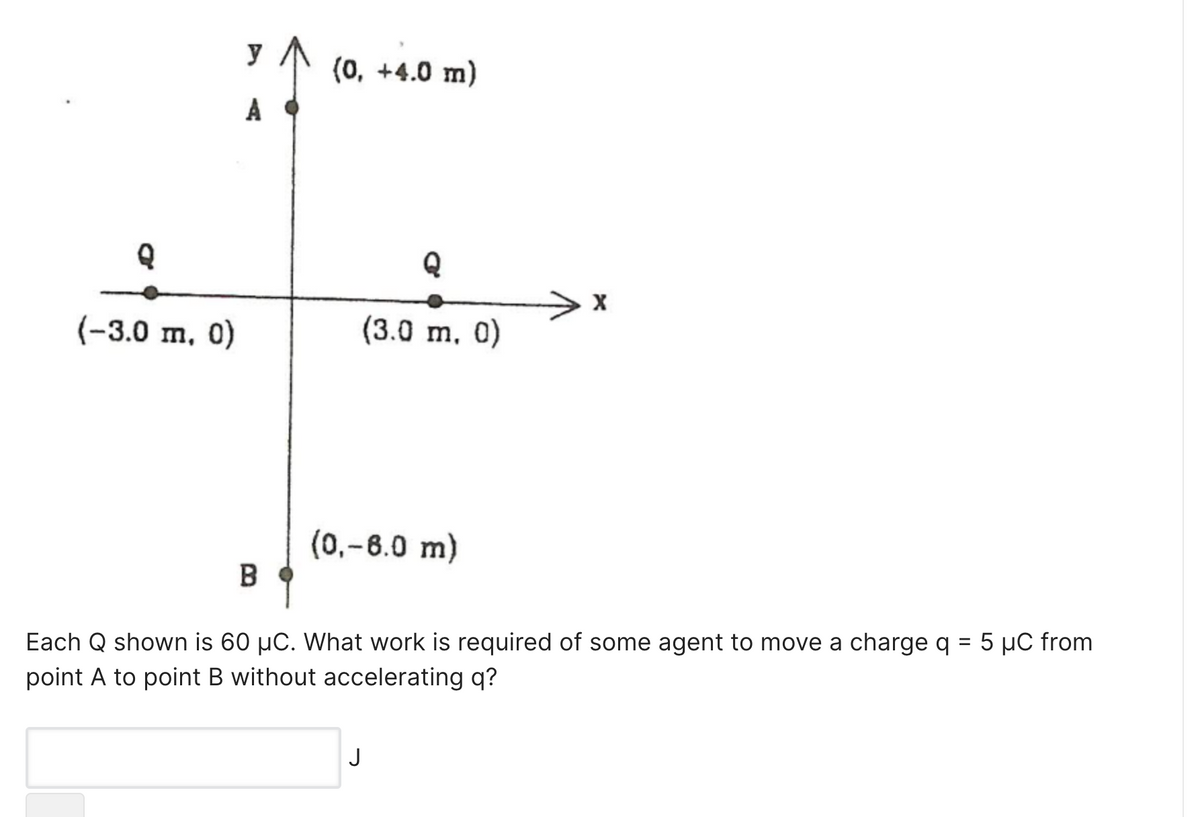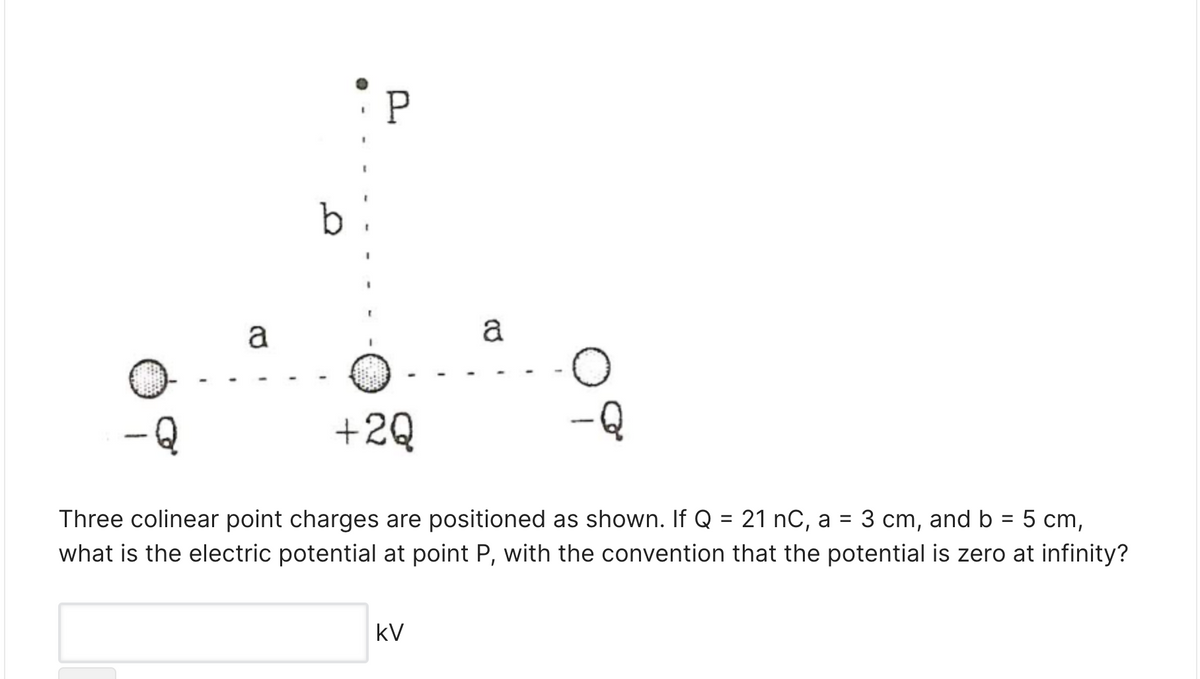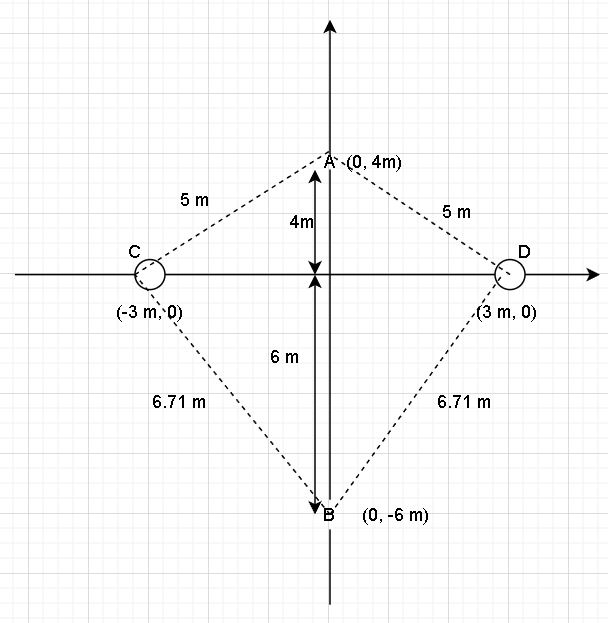Each Q shown is 60 µC. What work is required of some agent to move a charge q = 5 µC fror point A to point B without accelerating q? %3D
Each Q shown is 60 µC. What work is required of some agent to move a charge q = 5 µC fror point A to point B without accelerating q? %3D
Related questions
Question

Transcribed Image Text:y
(0, +4.0 m)
Q
(-3.0 m, 0)
(3.0 m. 0)
(0,-8.0 m)
B
Each Q shown is 60 µC. What work is required of some agent to move a charge q = 5 µC from
point A to point B without accelerating q?
J

Transcribed Image Text:a
a
+2Q
Three colinear point charges are positioned as shown. If Q = 21 nC, a = 3 cm, and b = 5 cm,
what is the electric potential at point P, with the convention that the potential is zero at infinity?
%3D
kV
Expert Solution
Step 1
Since we answer up to one question, we will answer the first question only. Please resubmit the question and specify the other question you would like to get answered.
Given: The value of the two charge Q is .
To determine: The work required to move a charge q of from point A to B.
The figure shows the distance between the charges to point A and B

The distance between A and C is calculated using Pythagoras rule,
Similarly value of AD is also 5 m.
The distance C and B is
Similarly the distance between DB is 6.71 m.
The potential is given as
where V is the potential, k is the constant, value of k is and r is the distance.
Trending now
This is a popular solution!
Step by step
Solved in 2 steps with 1 images
